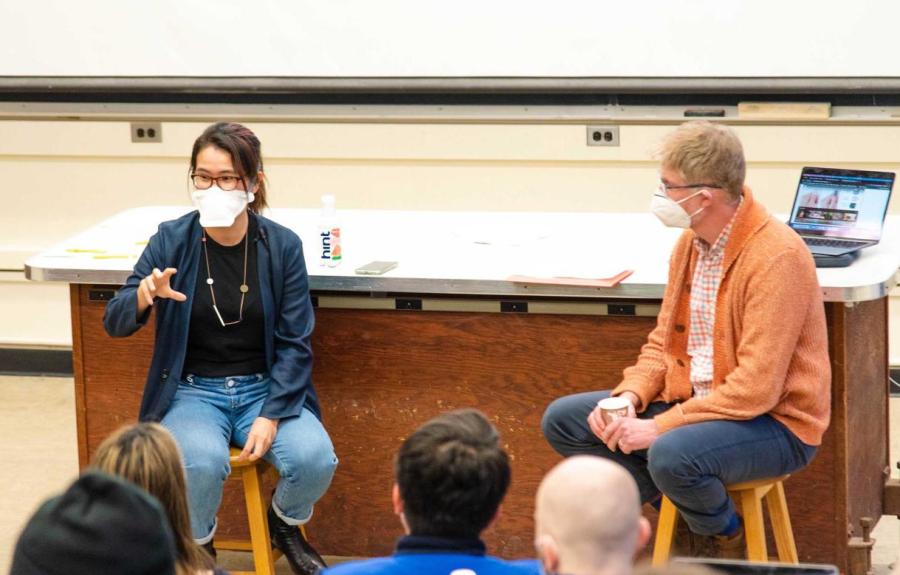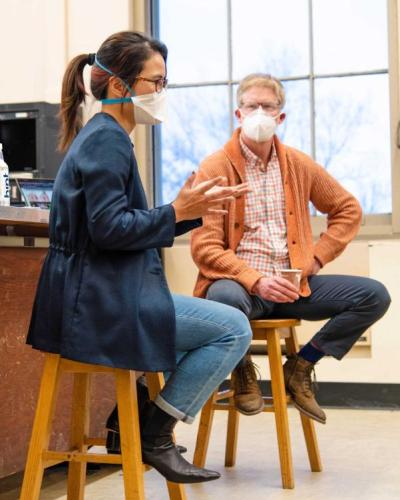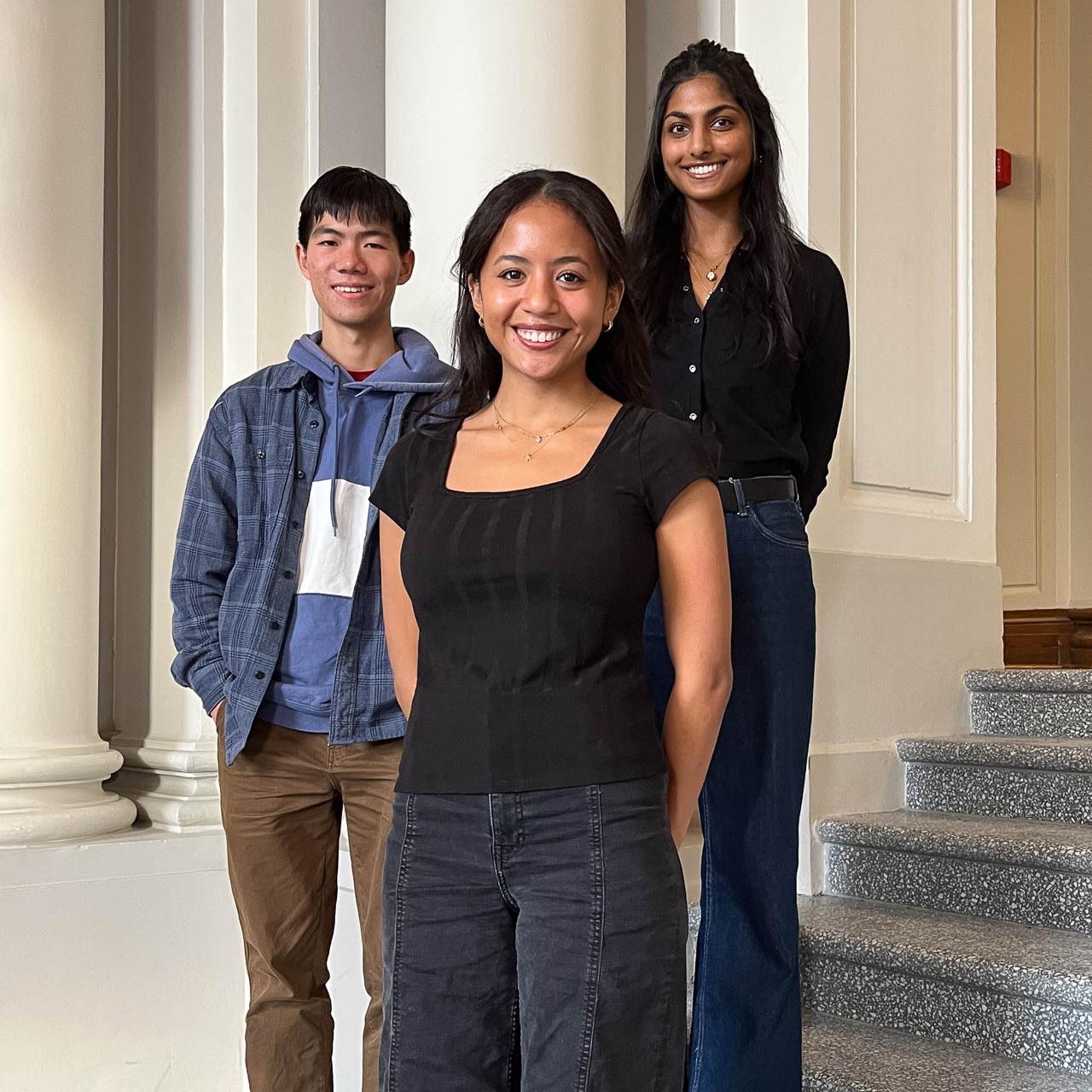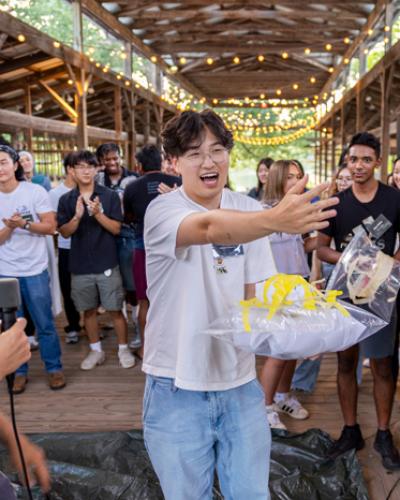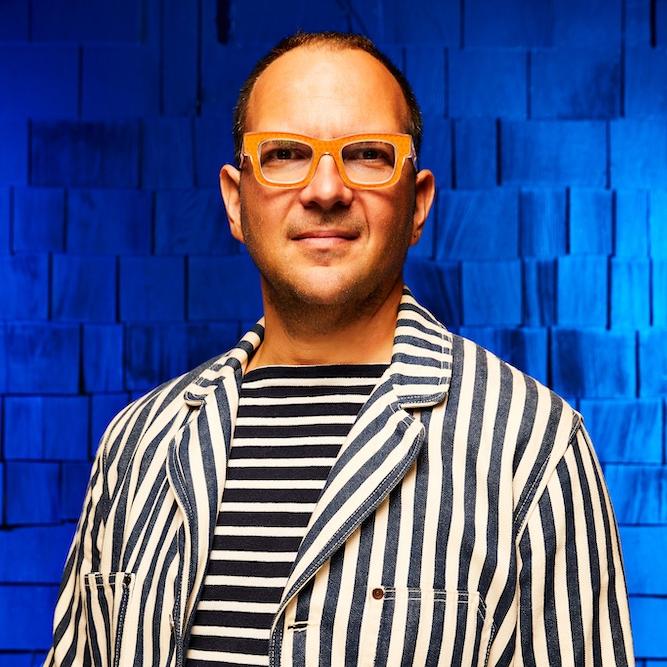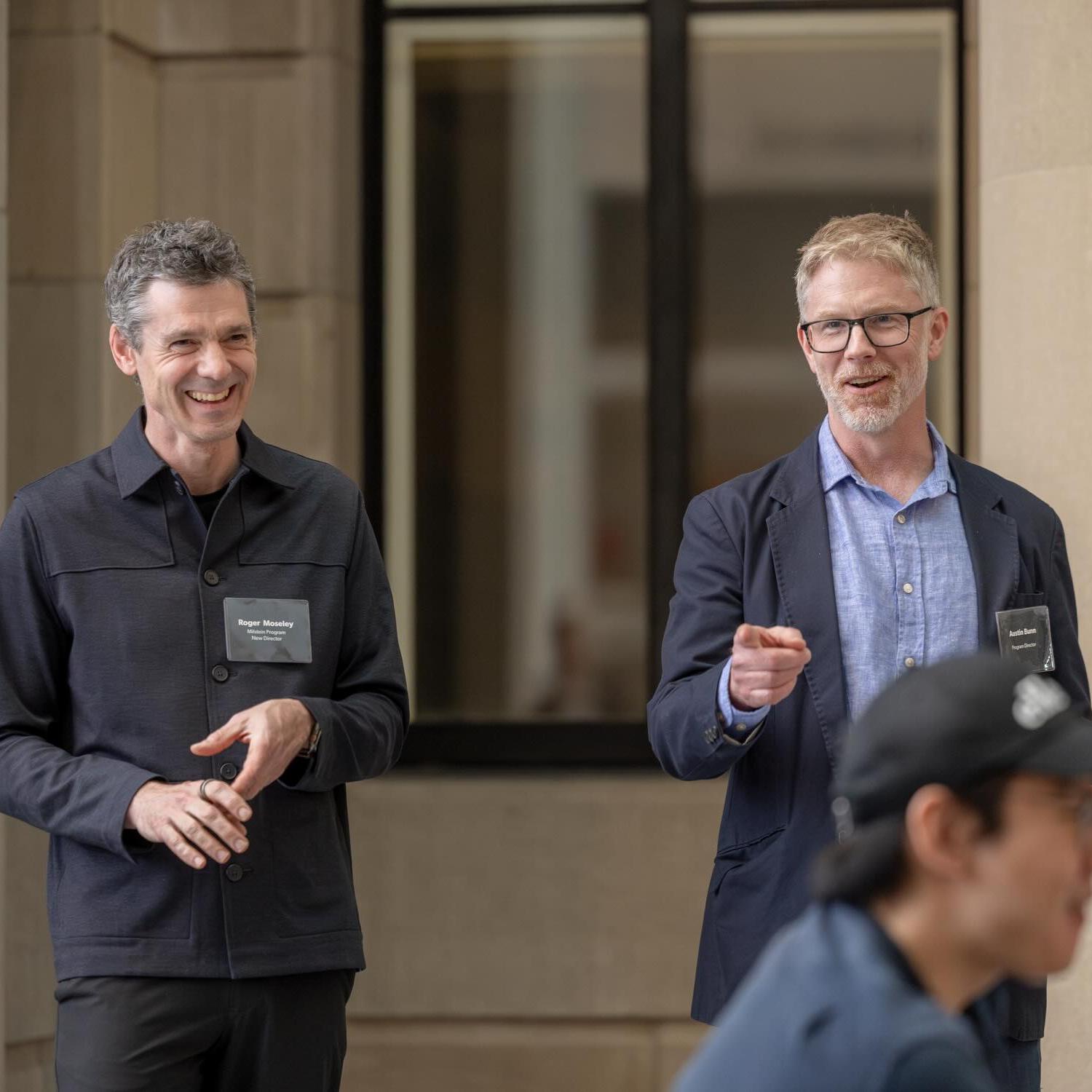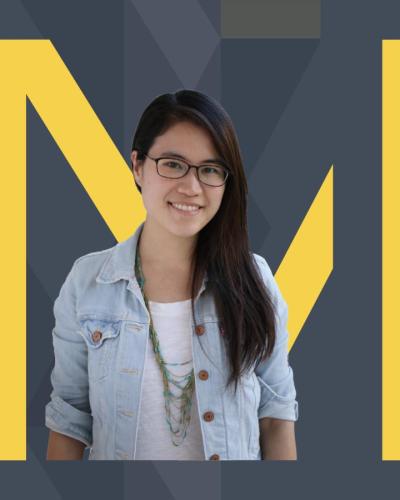“As designers, we need to design for diversity,” said Cindy Hsin-Liu Kao, Assistant Professor in Human Centered Design at Cornell. Sitting before a packed house of Milstein Program students and Cornell community on February 23, she spoke at length about her work creating inclusive and diverse designs for emerging soft wearable technologies.
Prof. Kao, who founded and directs Cornell’s Hybrid Body Lab, uses a blend of culturally-inspired materials, processes, and tools for crafting technology directly on human skin. Prof. Kao began this work while earning her Ph.D. in the MIT Media Lab. She found inspiration in her cultural roots. “In Taiwan, people are always editing their appearance,” she said, showing clips of Taiwanese street fashion: nail artwork, eyelash embellishments, and intricate jewelry saturated with bright colors and bold patterns. “These physical modifications are both temporary and affordable.”
Such aesthetics led her to develop body surface technology projects like NailO, which transforms fingernails into fashionable, functional trackpads.
Feeling homesick one evening, she dreamt of the ubiquitous Taiwanese posey dress patterns of her childhood. She was surprised to watch the posey flowers within the pattern move through the material, as if brought to life. The idea fascinated Kao, and she set out to replicate her dream in the lab. “My work station at the [MIT] Media Lab was covered with motorized little flowers,” she said, laughing. “My colleagues would stop and watch them crawl around."
These early prototypes evolved into Kino: kinetic fashion elements that move across fabric in response to environmental conditions. Infused with movement, these accessories will start displaying life-like qualities, learning, shifting, and reconfiguring to the needs and preferences of the wearer.
The popularity of temporary tattoos in Taiwan street fashion inspired Prof. Kao’s DuoSkin, a fabrication of gold leaf tattoos that can control mobile devices, display information, and store data directly on the skin. The ephemeral appeal of this technology had cultural resonance for Prof. Kao.
She looked at her audience. “Does anyone know what permanent tattoos mean in East Asia?”
“Mafia,” a student offered.
Prof. Kao explained that while permanent tattoos are normalized in the West, they remain heavily associated with gangsters and other criminal elements in many East Asian cultures. She pointed out that such nuances could be lost on designers who lack knowledge of these societies.
Clothing and skin are the two most intimate points of human contact, and Prof. Kao finds them fertile, complex ground for innovation. “This is the closest we can be with technology,” she said. “What we wear is an extension of how we present ourselves to the world. It’s who we are.” Prof. Kao’s lab works to create technologies that, “reflect [each] person’s sense of style, and do not conform the wearer to a predefined function or form.”
Prof. Kao acknowledged a cultural wariness towards the negative effects of technology, especially with regards to emotional well-being and privacy. Her lab works to make intimate, wearable technologies, “inexpensive, user-friendly, and temporary, they become more playful and more inviting for people to try.”
Milstein Program Director Austin Bunn asked Prof. Kao about the lessons learned from her many creative collaborations, including a project with fashion designer Christopher Bevans.
“When you collaborate with other people," she noted, "it’s important to bring a curiosity about new perspectives." Mixing different professions can cultivate unusual thought patterns and new pathways to innovation, but the process can be challenging. Prof. Kao doesn’t take these opportunities lightly. “When considering work with a new collaborator, “she said, “ I always ask myself: do we share the same values?”
Students should consider how collaborations could benefit each participant. “If you’re a scientist," she said, "your work thrives on publication. A fine artist, however, might be seeking large gallery shows. As a collaborator, you need to make sure everyone succeeds.”
Learn more about Dr. Cindy Hsin-Liu Kao’s projects and related opportunities for undergrads at https://www.hybridbody.human.cornell.edu/ and https://www.hybridbody.human.cornell.edu/contact.
Todd Miyashiro is the Program Coordinator for the Milstein Program.
Launched in 2017, the Milstein Program offers a unique multidisciplinary curriculum to students in the College of Arts & Sciences, with workshops in design thinking, community engagement and technology topics.

